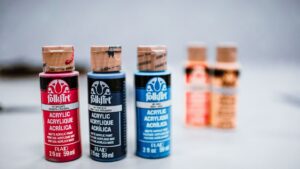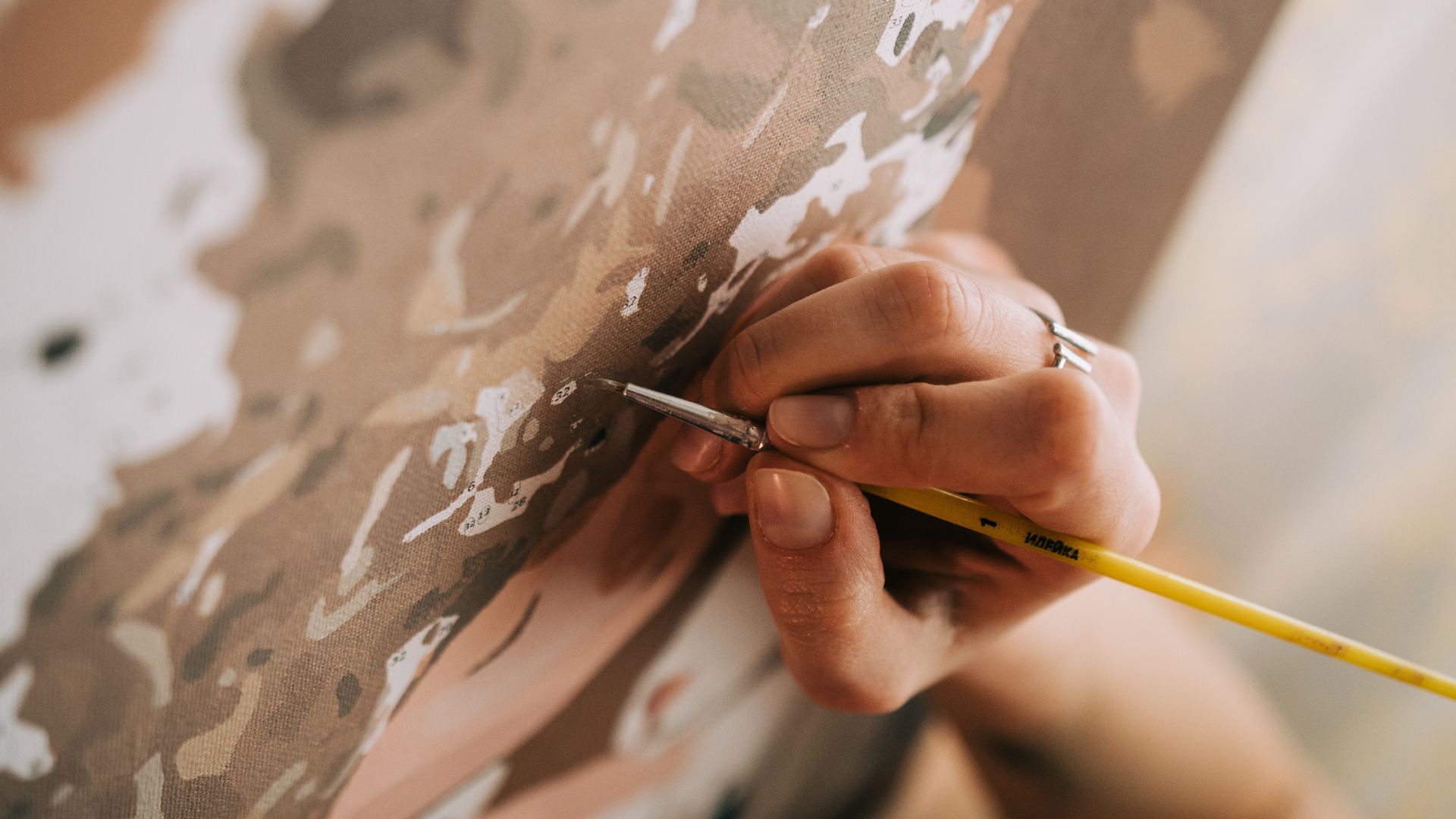Assessing the Wall Surface
Before starting, examine the condition of the wall. Ensure it’s structurally sound and free from major cracks or damage. Clean the surface thoroughly to remove any dirt, debris, or loose particles. Use a stiff brush and soapy water to scrub the wall and rinse it well.
Priming the Surface
Applying a primer specifically designed for masonry or concrete surfaces is crucial. It helps create an even base for the paint, improves adhesion, and prevents the paint from being absorbed too quickly into the porous surface of the cinder blocks.
Choosing the Right Paint
Opt for high-quality exterior acrylic paints that are durable and weather-resistant. These paints work well on textured surfaces and offer a wide range of colors to bring your mural to life. Consider using a sealer or topcoat to protect the mural from the elements and prolong its lifespan.

Sketching and Planning
Plan your mural by sketching it on paper first. Consider the size, scale, and design elements you want to incorporate. Transfer your design onto the wall using chalk or a pencil to outline the main features before painting.
Painting Techniques
When painting on textured surfaces, use techniques that complement the texture. Embrace the roughness by incorporating it into your design. You might need to apply multiple coats to ensure even coverage, especially in the crevices of the blocks.
External Resources:
- The Spruce: How to Paint a Cinder Block Wall – Offers detailed steps for painting cinder block walls.
- Sherwin-Williams: Priming Masonry Surfaces – Information on priming masonry surfaces before painting.
- Behr: Choosing Exterior Paint – Helps in selecting the right exterior paint for murals.
So,…
Painting a mural on a textured cinder block wall can be a rewarding creative project. By properly preparing the surface, selecting the right materials, and employing suitable painting techniques, you can transform a plain wall into a stunning work of art that adds beauty and personality to any space.
Adding Personal Touches
Consider incorporating elements that resonate with the location or the purpose of the mural. Whether it’s a community-driven artwork, a representation of nature, or an abstract design, infusing personal or local significance can make the mural more meaningful to viewers.
Maintenance and Longevity
Regular maintenance is essential to preserve the mural’s appearance over time. Periodically inspect the mural for any signs of wear, fading, or damage. Touch up areas as needed to maintain its vibrant colors and overall integrity.
Seek Permission
If the wall is in a public space or belongs to someone else, always seek permission before starting the mural project. Getting approval ensures you’re not infringing on any regulations or property rights.
Embrace the Imperfections
The texture of the cinder block wall might present challenges, but it also adds uniqueness to the mural. Embrace the imperfections and adapt your design to work harmoniously with the surface texture, creating a visually interesting and captivating piece.
Inspiration and Creativity
Draw inspiration from various sources like nature, art movements, cultural elements, or even your own imagination. Let your creativity flow and experiment with colors, shapes, and patterns to bring your vision to life.
Final Thoughts
Painting a mural on a textured cinder block wall is a creative venture that offers an opportunity to transform a space into something extraordinary. By following the necessary steps, using the right materials, and infusing your creativity, you can create a stunning piece of art that not only withstands the test of time but also enriches its surroundings.
Remember, every stroke of the brush is an opportunity to express yourself and captivate the audience, so enjoy the process and let your imagination soar
External resources:
- Community Murals: Techniques and Best Practices – Offers insights into techniques and practices for community murals.
- Artists Network: How to Paint Murals – Provides tips and techniques for painting murals.
- Cultural Significance in Public Art – Explores the importance of cultural significance in public art projects.
Comparison tabular
Here’s a simple tabular comparison between painting a mural on a textured cinder block wall and a smooth surface like a plaster wall:
| Aspect | Textured Cinder Block Wall | Smooth Plaster Wall |
|---|---|---|
| Surface Preparation | Cleaning is crucial to remove debris from texture. | Smoother surface, easier to clean. |
| Priming is essential for better paint adhesion. | Priming is still recommended. | |
| Paint Application | Multiple coats may be needed for even coverage. | Fewer coats generally for uniform finish. |
| Texture can influence brushstroke direction. | Smoother application of paint. | |
| Challenges | Embracing texture for an artistic advantage. | Achieving flawless finish is easier. |
| Filling gaps in texture can be time-consuming. | Imperfections are less noticeable. | |
| Durability | Texture can add dimension and resilience. | Smoother surface might show wear more. |
| Design Adaptability | Incorporating texture into design for depth. | Designs can be more precise and detailed. |
| Overall Aesthetics | Texture adds character and uniqueness. | Smooth finish offers a polished look. |
Both surfaces offer distinct advantages and challenges. While a textured cinder block wall can bring character and dimension to a mural, a smooth plaster wall might allow for more precise detailing. The choice often depends on the desired aesthetic, the intended purpose of the mural, and the artist’s style.
Wrapping up
Painting a mural, whether on a textured cinder block wall or a smooth plaster surface, is an exciting journey filled with creativity and artistic expression. Each surface type presents its own set of opportunities and challenges, ultimately shaping the final outcome of your masterpiece.
Embrace the texture of a cinder block wall as a canvas that adds depth and character to your art. Use it to your advantage, allowing it to influence your design and create a unique visual experience.
On the other hand, a smooth plaster wall offers a clean canvas that enables intricate detailing and precise designs, giving your mural a polished and refined appearance.
Whichever surface you choose, remember that your creativity knows no bounds. Let your imagination flow, adapt to the surface’s characteristics, and transform it into a captivating piece of art that leaves a lasting impression.
If you’re venturing into mural painting, enjoy the process, experiment with techniques, and most importantly, let your passion guide your brushstrokes. Happy painting!

For over a decade, I’ve been Mike, an artist, crafter, and designer deeply immersed in the Croc world. I thrive on crafting unique, size-inclusive patterns, fostering creativity, and sharing them on ktforum.com. My designs aim to ignite your creative spark and delight you, ensuring clarity and ease of use through rigorous testing. Join me in expressing your creative flair and showcasing your craft with joy.
Related Posts
- Guide to Choosing the Right Primer for Painting a Mural on a Cinder Block Wall
Whether you're an experienced muralist or diving into your first large-scale painting project, preparing a…
- Painting a Mural on a Cinder Block Wall: Adding Artistry to Outdoor Spaces
Outdoor walls, especially those made of cinder blocks, offer a fantastic canvas for artistic expression.…
- The essential tools needed for painting a mural on a cinder block wall
Painting a mural on a cinder block wall can be an incredibly rewarding and transformative…
- Understanding Primer Coats for Cinder Block Wall Murals
Cinder block walls offer a sturdy canvas for murals but require careful preparation to ensure…

